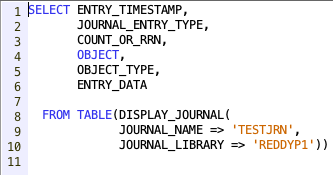Linear Independence & Dependence Explained (The Key to Feature Engineering)
This is Why Your Machine Learning Model is Unstable (Linear Independence)
Imagine you're building a machine learning model to predict a person's weight. You have a dataset with features like height in centimeters and age. To improve the model, you decide to add another feature: height in inches. Your intuition might say "more data is better," but as an engineer, you should spot the flaw immediately.
The "height in inches" feature is 100% redundant. It provides zero new information that "height in centimeters" doesn't already. This common-sense idea of redundancy has a formal, powerful name in linear algebra: Linear Dependence.
Understanding the difference between linear dependence and independence is not an abstract academic exercise; it's a critical concept with huge real-world consequences for building simpler, faster, and more robust ML models.
Watch the video for the full visual explanation, then scroll down for the detailed definitions and mathematical tests.
The Developer's Mental Model: Unique Building Blocks
Think of the features in your dataset as "building blocks," or vectors, that define your data's "playground" (the vector space). To describe any location in a 2D world, you only need two fundamental building blocks: a vector that points purely horizontally (i-hat or `[1, 0]`) and one that points purely vertically (j-hat or `[0, 1]`).
These two vectors are special because they are Linearly Independent. The simple definition is: you cannot create one of them by simply stretching or shrinking the other. The vertical vector contains no "horizontal" information, and the horizontal vector contains no "vertical" information. They each provide unique, non-redundant directions.
Redundancy as Linear Dependence
But what if we have two vectors, v₁ = [2, 1] and v₂ = [4, 2]? Visually, they lie on the exact same line. It's clear that v₂ is just v₁ scaled by two. It provides no new directional information. These vectors are Linearly Dependent—one is a linear combination of the other. They are redundant.
The Mathematical Test for Independence
How do we test for this mathematically? The formal definition is as follows:
A set of vectors {v₁, v₂, ..., vₙ} is said to be linearly independent if the only solution to the equation:
c₁v₁ + c₂v₂ + ... + cₙvₙ = 0
...is the "trivial solution" where all the scalar coefficients (c₁, c₂, etc.) are zero.
If there is any non-trivial solution (where at least one coefficient is not zero), the set of vectors is linearly dependent.
Let's test our redundant vectors v₁ = [2, 1] and v₂ = [4, 2]. We are looking for a non-zero solution to `c₁[2, 1] + c₂[4, 2] = [0, 0]`. We can clearly see that if we choose `c₁ = 2` and `c₂ = -1`, the equation holds true. Since we found a solution where the coefficients are not all zero, we have mathematically proven that the vectors are linearly dependent.
An Engineer's Shortcut: The Determinant
For a square matrix, there's a quick way to check for independence. If the determinant of the matrix formed by your vectors as columns is non-zero, the vectors are linearly independent. If the determinant is zero, they are linearly dependent.
Why This Matters for Machine Learning
This isn't just an abstract math exercise. Linear dependence has huge, practical consequences for building ML models.
- Multicollinearity: This is the statistical term for when you have linearly dependent (or highly correlated) features in your dataset. When fed into a model like Linear Regression, it can cause the model's coefficients to become unstable and unreliable. The model can't decide which redundant feature to "assign" importance to, making your results difficult to interpret. The first step of good feature engineering is often to find and remove this redundancy.
- The Curse of Dimensionality: Every feature adds a dimension to your problem. Redundant features add dimensions—and therefore computational complexity and the need for more data—without adding any new, useful information. It's all cost and no benefit.
- Basis of Dimensionality Reduction: Powerful algorithms like Principal Component Analysis (PCA) are essentially sophisticated methods for finding a new set of basis vectors for your data that are all linearly independent. PCA is a machine for automatically discovering and removing hidden redundancy, allowing you to represent your data with fewer, more potent features.
Conclusion
Linear Independence is the formal, mathematical language for the engineering concept of "redundancy." If you want to build models that are simpler, more stable, and easier to interpret, you must first ensure your building blocks—your features—are providing unique information. It’s not just good math; it’s good, efficient engineering.
Your Turn...
What's the most surprising example of redundant data you've ever encountered in a project? Share your experience in the comments!
This post is part of the "Linear Algebra: The Core of Machine Learning" series. For the previous part, check out: Vector Spaces: The "Playground" Where Your Data Lives.


Comments
Post a Comment